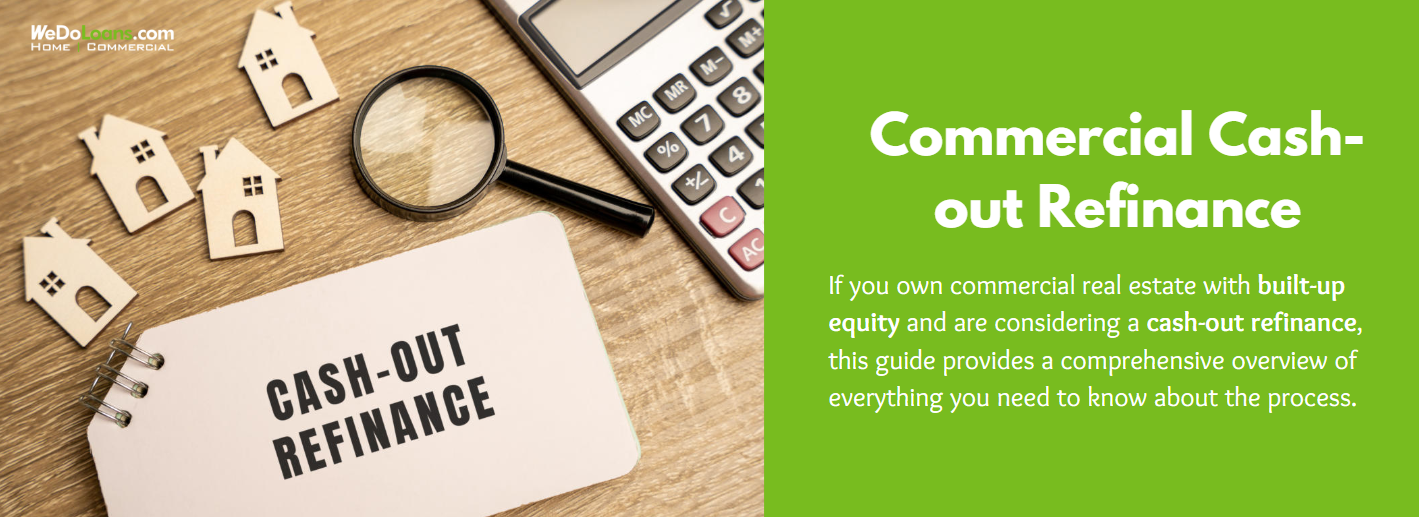
A commercial cash-out refinance allows property investors to access the equity tied up in their real estate, which would otherwise remain illiquid. While selling the property is one way to unlock equity, refinancing offers an alternative with several potential advantages.
What Is a Commercial Cash-Out Refinance?
A commercial cash-out refinance involves replacing an existing loan on an investment property with a larger loan. The difference between the new loan amount and the original mortgage is disbursed to the investor as cash. This equity can be used for property improvements, new acquisitions, investor distributions, or other business purposes.
How Does It Work?
The process of a commercial cash-out refinance typically follows these steps:
- Equity Evaluation: The investor determines the equity available in the property.
- Securing a New Loan: A new mortgage is taken out, usually for up to 75-80% of the property’s current market value.
- Paying Off the Existing Loan: The new loan proceeds are used to pay off the original mortgage.
- Receiving the Cash-Out Amount: The remaining balance is given to the investor as cash.
- Utilizing the Funds: The disbursed cash can be used for property upgrades, new investments, or any other financial need.
Key Features of Commercial Cash-Out Refinancing
The terms and conditions of a cash-out refinance depend on the lender, but common features include:
- Equity Requirements: Most lenders require 30-40% equity in the property before refinancing, leaving the investor with 20-25% equity after the new loan is issued.
- Loan-to-Value (LTV) Ratio: The maximum LTV is typically 80%, meaning the new loan can be up to 80% of the property’s appraised value.
- Debt Service Coverage Ratio (DSCR): Lenders usually require a DSCR of 1.2 to 1.5, ensuring the property generates enough income to cover the loan payments.
- Fees and Closing Costs: Refinancing typically involves 1-3% lender fees and 2-5% closing costs. Prepayment penalties on the original loan may also apply.
- Loan Term: Cash-out refinance loans often have terms ranging from 15 to 30 years.
- Processing Time: The refinancing process generally takes 30-45 days, though delays may occur during underwriting.
Example of a Commercial Cash-Out Refinance
Imagine an investor owns a property purchased for $1 million that is now worth $1.3 million. The original loan of $800,000 has been paid down to $700,000, leaving $600,000 in equity.
The investor refinances with a new $1 million loan:
- $700,000 is used to pay off the original loan.
- $35,000 covers the prepayment penalty.
- $40,000 goes toward closing costs.
- The investor receives $225,000 in cash, which can be used for property improvements or new acquisitions.
Advantages of Cash-Out Refinancing
- Access to Liquidity: Converts equity into usable capital without selling the property.
- Potential Tax Benefits: Cash-out funds used for improvements or new investments may offer tax advantages.
- Faster than Selling: Refinancing is generally quicker than finding a buyer.
- Preserves Ownership: Allows the investor to retain ownership and benefit from future appreciation.
- Opportunity for Lower Interest Rates: If rates have dropped, refinancing could result in lower monthly payments.
Disadvantages of Cash-Out Refinancing
- Upfront Costs: Lender fees, closing costs, and potential prepayment penalties can reduce the net cash received.
- Risk of Higher Rates: If current interest rates are higher than the original loan, the new loan may have less favorable terms.
- Equity Requirements: Properties with limited equity may not qualify for cash-out refinancing.
- Added Debt: The new loan increases the property’s debt obligations, which can affect cash flow.
Cash-Out Refinance vs. Selling
- Selling fully liquidates the property’s equity and eliminates all ownership responsibilities. However, it may result in capital gains taxes and loss of future appreciation potential.
- Refinancing provides access to equity without selling, enabling the investor to retain ownership and benefit from future gains. It may also reduce tax liabilities, as cash-out proceeds are not considered taxable income.
Conclusion
A commercial cash-out refinance can be a valuable tool for investors seeking to access equity and redeploy capital. Whether the goal is to enhance existing properties, purchase new ones, or cover expenses, this strategy offers flexibility and potential tax benefits. However, it’s essential to carefully evaluate the costs, interest rates, and potential risks before proceeding.
